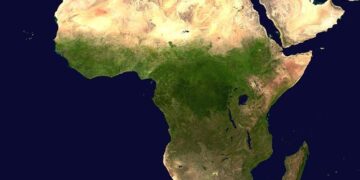In a new study, more than 50 researchers conducted a review comparing the effectiveness of state-managed protected areas and areas managed by Indigenous peoples and local communities.The review found that comparing the two was very challenging for various reasons, including the difficulty in figuring out who was managing an area, as well as a lack of comparable data and different groups of researchers measuring different things, making comparisons hard.The studies that did allow for comparisons showed that no single governance type consistently outperformed the other. What works better seems to be super local and context dependent.At the same time, the review found that, in general, the existing scientific literature underscores the importance of community-driven conservation.
What works better: protected areas managed by the state, or areas conserved by Indigenous peoples and local communities? More than 50 different researchers came together to try to settle this debate. But their review of the scientific literature, published recently in Annual Reviews of Environment and Resources, concluded with what some might find to be an unsatisfactory answer: what works is super local, and context dependent.
“In some ways, it’s a rather discouraging finding because if conservation effectiveness becomes so locally specific and so context dependent, it limits the purview of grand global statements,” says Dan Brockington, an anthropologist at the University of Sheffield, U.K., and a corresponding author of the study. “On the other hand, that’s an incredibly empowering finding for national, regional, and local conservation groups because it basically says, look, we do know what’s best about our context.”
One reason the researchers set out to compare state-managed areas and those managed by Indigenous peoples and local communities is because of biodiversity conservation targets that loom close. Hundreds of countries, for instance, have agreed to the global “30 by 30” target aiming to conserve 30% of our planet’s land and water by 2030, which is only six years away. On one hand, governments are responding to the targets by declaring new state-governed protected areas or expanding existing ones, which may involve the eviction of communities. On the other hand, there’s growing criticism of this old conservation model, and a push to let Indigenous peoples and local communities manage the forests and oceans they live closely with. But how do the two conservation strategies compare?
To find out, Brockington and Paige West, an environmental anthropologist at the Columbia University in the U.S., reached out to more than 50 researchers from around the world. These researchers were split into groups, each focusing on a specific region. Each group then evaluated the evidence around state-managed and Indigenous peoples and local communities-managed areas from that region.
This evidence can come in various forms. They can be studies published in peer-reviewed scientific literature. They can also be information buried within what’s called the “gray literature” — things like reports and government documents. The different regional groups had no set mandate; they were free to dig into whatever they felt would reveal the most about their geographic regions. This allowed more diverse perspectives to come in, West says, from ecological to social, historical to anthropological.
“The approach taken of having multiple teams covering geographic regions is particularly valuable in my opinion, in being able to adequately consider how different conservation interventions have variable impacts in different parts of the world, with their varying histories,” Jocelyne Sze, a researcher at the Autonomous University of Barcelona, says in an email. “I do think it provides more nuance and covers more ground than the standard systematic review and provides a more holistic and useful picture for readers.” While Sze was not involved in the study, a paper she authored was included in the review.
 Interior of the Amazon rainforest, Ecuador. The review of the debate on whether protected areas managed by the state, or areas conserved by Indigenous peoples and local communities, do better, concluded with what some might find to be an unsatisfactory answer: what works is super local, and context dependent. Image by Rhett A. Butler/Mongabay.
Interior of the Amazon rainforest, Ecuador. The review of the debate on whether protected areas managed by the state, or areas conserved by Indigenous peoples and local communities, do better, concluded with what some might find to be an unsatisfactory answer: what works is super local, and context dependent. Image by Rhett A. Butler/Mongabay.
Comparing apples and oranges
Despite the deep dive into various literature, the researchers found that comparing the effectiveness of different forms of governance was very tricky.
One major challenge, they observed, is that delineating who’s managing an area can be fuzzy. While some state-owned protected areas are governed entirely by state authorities, some are managed by conservation NGOs. In others, it can be a combination of state authorities, NGOs, and Indigenous peoples and local communities. Many countries are also moving toward a more participatory approach by including communities in the management of state-owned protected areas. At the same time, Indigenous peoples and local communities sometimes partner with governments or NGOs to manage their territories. But participation of communities doesn’t always mean they have the power to decide how an area is managed and what gets protected. The researchers found that this spectrum of participation and its consequences isn’t well captured or evaluated in many studies. This makes it hard to compare the two forms of conservation.
Another major challenge was the lack of good comparable data, the researchers found.
“The kinds of things that get measured by different epistemic communities are really different,” West says. Ecologists, for instance, tend to measure changes in land or forest cover, which is easier to monitor over time through remote sensing. However, equally important measures like animal populations aren’t monitored as rigorously. Social scientists, on the other hand, tend to be interested in various measures of the health and well-being of people living in and around protected areas.
“I think the question of who’s measuring what, for what ends, was one of the hardest things because there is no uniformity, and that poses a challenge for comparison, and it poses a challenge for a conclusion about different governance types,” West says.
Another reason for the lack of papers that compare across governance type could be because data on Indigenous lands were only made available more recently, or may not be publicly available yet, Sze says.
“Many countries may not have Indigenous lands and/or community-managed lands data available for researchers to use, while protected area datasets have existed for a much longer time,” she says. “Given the increased push to mapping different governance types, particularly in areas where data has not been as widely available, I would expect that more papers examining these comparisons will be published in the coming years.”
 Posito Daom, a Pala’wan, pauses on his descent to the lowlands to sell chayote cultivated using the no-till method, a sustainable practice that avoids turning over and disturbing the soil, according to studies. Image by Keith Anthony S. Fabro for Mongabay.
Posito Daom, a Pala’wan, pauses on his descent to the lowlands to sell chayote cultivated using the no-till method, a sustainable practice that avoids turning over and disturbing the soil, according to studies. Image by Keith Anthony S. Fabro for Mongabay.
Results depend on the context
In the end, the researchers were able to shortlist 12 studies that compared the effectiveness of state-managed and community-managed conservation areas using a counterfactual method. These studies include those that compare changes before and after an area was brought under protection, for example, or ones that compare protected areas or community-managed areas with similar areas not under the same kind of “protection.” Scientists look to such studies to attribute outcomes like changes in forest cover or livelihoods of the communities to the intervention itself, and not to other reasons that may have played a role.
All of the 12 studies were focused on deforestation, including Sze’s 2021 study where they compared deforestation rates in Indigenous lands and protected areas across the tropics. And they showed that no one governance type was consistently better at reducing deforestation.
For Sze, this finding isn’t surprising. “The contexts for different governance categories are different across the world with varying implications for tree cover loss,” she says. “And how different governance types might be categorized by the researchers and how they are actually experienced on the ground would also contribute to the difficulties in finding consistent patterns.”
If anything, the finding speaks to the need for conservationists to pay attention to the specific context in which they’re planning interventions, Sze adds, rather than focusing on just one category of conservation governance.
The review also noted that there were a handful of cases where either traditional protected areas performed better than other types of governance, or it was the other way round. The researchers didn’t dig into the reasons for these, but West says there might be several reasons at play.
“Let’s say, we’re talking about tree cover loss in Indigenous-managed areas in the Western Pacific,” West says. “There are constant pressures on these communities to alter the tree use cover of the land that they’re using — there are logging pressures, mining pressures, the pressure to plant oil palm. And so, if in fact the data show that the locally or Indigenous-managed areas are not performing as well in terms of the metric of tree cover, then it is outside drivers.”
Sze’s study found, for instance, that Indigenous lands in Africa and Asia Pacific were better than, or as good as, protected areas at retaining forest cover. In the Americas, however, protected areas were slightly better at avoiding deforestation than Indigenous lands — although both retained more forest than similar unprotected sites. Sze didn’t investigate the reasons, but she says it’s possible that protected areas are better able to keep outside pressures at bay than Indigenous lands.
 Forest rangers of Drawa village, Fiji’s first Indigenous-owned carbon credit project. Image by Monica Evans for Mongabay.
Forest rangers of Drawa village, Fiji’s first Indigenous-owned carbon credit project. Image by Monica Evans for Mongabay.
“It is also possible that Indigenous peoples are the ones causing forest loss through those activities, though given what is known about Indigenous groups calling for more protection and prevention of extractive activities from happening on their lands, I do not think this is a likely possibility,” Sze says. “And even if some segments of the Indigenous population do carry out deforestation, it is unlikely to show up at the scale in which our study was conducted.”
One big challenge that community-managed areas often face is the lack of legal recognition by governments, says Dominique Bikaba, co-founder of Strong Roots Congo, a conservation NGO that works with communities in the Democratic Republic of Congo. The problem is worsened when community-conserved areas overlap with regions rich in strategic minerals. This makes them vulnerable to extractive companies and other abusive exploitation, Bikaba, who was not involved in the review, says in an email.
On the other hand, state-owned protected areas tend to perform worse than Indigenous lands when there’s a lack of law enforcement and good governance, as well as corruption and conflict of interest of the state agencies, says Paul Sein Twa, executive director of the Karen Environmental and Social Action Network (KESAN), an organization involved in the management of the Indigenous-led Salween Peace Park in Myanmar.
“It is true in my own country and my own context because in Burma [Myanmar] in Karen territories, you can see that most of the good forests and biodiversity exists within Karen territories,” he adds. “You can look at the forest cover change and see that the deforestation and degradation rate is higher in government-protected area than IPLCC ones.”
For Sein Twa, giving Indigenous peoples and local communities the governance powers to manage their territories is the only way forward in achieving the 30 by 30 target.
In fact, several review studies, analyzing findings from hundreds of other papers, have consistently found that areas governed by communities, in part or in whole, have good outcomes for the forests as well the communities, particularly when the communities are empowered.
Still, the general lack of scientific papers using rigorous methods and comparisons was surprising, Brockington says. Studies evaluating Indigenous-managed areas were especially lacking.
“I think there’s a lack of this in the published literature,” West says. “There’s a ton of data either in non-published forms or in the gray literature.”
In Karen territories in Myanmar, for instance, Sein Twa says the communities monitor various aspects of their lands, from biodiversity and wildlife to threats like illegal logging. But such monitoring work is frequently hampered by the ongoing conflict between the communities and the military in the country, he adds. This is compounded by lack of funding and access to donors.
“For Indigenous local communities, especially in militarized situations, it is difficult [to access those] and donors move away from us,” Sein Twa says. “We know that there is funding available, but there are too many requirements of legality and paperwork.”
 An oriental pied hornbill. In Karen territories in Myanmar, Sein Twa says, the communities monitor various aspects of their lands, from biodiversity and wildlife to threats like illegal logging. Image by Rhett A. Butler/Mongabay.
An oriental pied hornbill. In Karen territories in Myanmar, Sein Twa says, the communities monitor various aspects of their lands, from biodiversity and wildlife to threats like illegal logging. Image by Rhett A. Butler/Mongabay.
The way most studies measure effectiveness, often using proxies like tree cover, also doesn’t capture what communities might consider to be effective conservation.
“The most important outcome for IPLC members is how the area helps them perpetuate their rituals, cultures, customs and traditions,” Bikaba says. While protected areas focus on the scientific, economic and social values of the sites, he adds, for conserved areas, preserving the cultural values of the sites is an additional goal.
West has come to a similar conclusion. “For me, this enterprise has made it so much more clear that assessment should be bottom-up, and that assessment should be about what matters to the people that are living with those ecological systems,” she says.
The review doesn’t cover all parts of the world, such as South Asia. The study also focuses on land and doesn’t compare marine conservation areas as deeply.
“With a mixture of methods and resources we had, you get gaps,” Brockington says. “However, in our case, we got fewer gaps in the substance, and so I still think it presents a useful contribution because it creates the opportunity for other scholars to take the conversation [forward] and fill the gaps.”
Banner image: A Karen man in his boat in Myanmar. “Most of the good forests and biodiversity exists within Karen territories,” says Paul Sein Twa, executive director of the Karen Environmental and Social Action Network (KESAN). Image by The French Travel Photographer via Flickr (CC BY-NC-SA 2.0).
More evidence backs Indigenous territories as best safeguard against Amazon deforestation
Related listening from Mongabay’s podcast: We speak with National Geographic photographer Kiliii Yuyan to talk about the value of traditional ecological knowledge (TEK) in protecting the world’s biodiversity and examples of TEK from Indigenous communities he’s visited. Listen here:
Citations:
Zhang, Y., West, P., Thakholi, L., Suryawanshi, K., Supuma, M., Straub, D., … Agyei, F. K. (2023). Governance and conservation effectiveness in protected areas and Indigenous and locally managed areas. Annual Review of Environment and Resources, 48, 559-588. doi:10.1146/annurev-environ-112321-081348
Sze, J. S., Carrasco, L. R., Childs, D., & Edwards, D. P. (2022). Reduced deforestation and degradation in Indigenous Lands pan-tropically. Nature Sustainability, 5(2), 123-130. doi:10.1038/s41893-021-00815-2
FEEDBACK: Use this form to send a message to the author of this post. If you want to post a public comment, you can do that at the bottom of the page.
Biodiversity, Climate Change, Community Forests, Community-based Conservation, Conservation, Conservation Solutions, Environment, Environmental Politics, Forest People, Forests, Global Warming Mitigation, Governance, Indigenous Communities, Indigenous Peoples, Indigenous Reserves, Indigenous Rights, Land Rights, Mapping, Protected Areas, Rainforest People, Tropical Forests
Global
>>> Read full article>>>
Copyright for syndicated content belongs to the linked Source : MongaBay – https://news.mongabay.com/2024/01/who-protects-nature-better-the-state-or-communities-its-complicated/































